Driving Through Zion on dangerous roads
Upon arrival in Shashemene we drove into Jamaica and we immediately understood where this neighbourhood got its name from. Houses were painted in the typical red-yellow-green colours and raggae music sounded from the bars. Relaxed rastafaris greeted us from along the road, yelling “hallo bother, yes, sista!” Shashemene is the Rastafari refuge in Ethiopia, a small patch of promised land within the larger Zion. We always thought that the Rastafaris grew large on Jamaica and had mainly the smoking, laissez-faire attitude and hair-growing at its core. We were ignorant, we learned here.
The Rastafari movement has its roots and purpose in Ethiopia. An ancient prophecy is written in the Bible, that one day the King of Kings will rise. Marcus Garvey, a Jamaican, predicted that this prophecy would fulfill around the early 1930s. In this year, a new emperor was crowned in Ethiopia: Haile Selassie, with birth name Ras Tafari. So the movement designated him as the true King of Kings and started worshipping him fecoriously, adopting the red-yellow-green from the Ethiopian flag.
The Rastafaris believe that all black people will someday return to Zion,, the promised land of Ethiopia. Not to be confused with the Zion that the Jews use to indicate their promised land, though.
Some Western people try to be Rastafaris. Maybe they don’t know the actual meaning, that liberation of blacks from the white (colonial) oppressor is at the core of the belief, or perhaps they try to show their support to the cause of these blacks. Anywway it is frowned upon by most Rastas.

They adopted the red-yellow-green from the Ethiopian flag and added the black, symbolising independence of the black people who had been oppressed all over the world throughout recent history, including on Jamaica. Rastas cling on to a verse in the bible telling that ‘herbs are designed for the used of man’, or something alike. Herbs they interpret as marihuana. The long dreadlocks are a sign of devotion and should never be cut.
So when the Rastas persisted in worshipping emperor Haile Selassie and seeing Ethiopia as their zion, he finally budges and gave them some land in the town called Shashemene. There is now a small community of ca. 1000 Rastas living here and it is a nice contrast to see the happy colours and walk through the clouds of ganja fumes during midday. Their numbers haven’t been growing, so I guess most Rastas still have to find their way to the promised land.
Back to the road. We have driven the Ethiopian asfalt and dirt for 6 weeks now and we must tell you: it is a challenge. The biggest adventure here is dodging all obstacles and getting to the next town safely. For those of you who would be interested in renting a car here during their holidays: here’s a head’s up on what to expect.
We try to drive on tar as much as possible, because the piste and dirt roads is a real strain on the car. The Bushi can manage all terrain, off course, albeit slowly. We found out that what one overlander told us, is true: “when you have money, you drive 60 km/h on piste. If you don’t have money, you drive 15 km/h.” We are with the latter party…
The road is always buzzing with activity. Left and right there are people selling corn, wood carvings of home-brewed booze. Many locals sit in the shade with large packs of luggage, waiting to get a ride. When we pass by, they signal us to stop. We guess that most think that we are a local transport minibus, because they don’t wave to toury-filled landcruisers, nor to cars driven by locals with space for hitch hikers. Besides, the Bushi looks almost identical to the local minibuses here. Well, apart from the 20 people squeezed into it like sardines and apart from the 3 meters luggage, 5 sheep or an occasional camel piled on top of it.
We never stop for hitch hikers though. First of all, because locals also don’t stop either to give their fellow Ethiopians a ride. And we figure there must be a reason for that. Second, it is not without risk taking complete strangers. Some carry rifles, some swing giant machetes. We are willing to trust people, but on the other hand, this bus is everything we have. And poverty and hunger may just induce crazy ideas…
Then there are loads of kids trying to make some pocket money by dancing along the road. They shake their harlems for faranji as well as habesha (Ethiopians). They have a diverse repertoire: some move Elvis-like by swinging their knees while balancing on their toes, while others jump straight up, a bit like pencils. The most popular move is the upper body shake. Imagine that ‘Around the World’ video clip by Daft Punk and you have a slight idea of what it lookes like. We were advised never to give these kids any money, because it stimulates them to skip school.
Driving in Ethiopia is not without danger. Let us enlighten you on the things that have us waking up in the middle of the night, bathing in sweat.
Threat 1: the animal parade
In Ethiopia, the road belongs to everybody. In fact, the cattle are the real kings of the road. There are no separate trottoirs or bike lanes, there are no fences to keep animals off the asfalt. And because public transportation for people as well as transportation of goods is limited, there are cars, donkeys, cows, sheep, people and dogs everywhere. When people hurd their sheep and cows, they don’t just let the animals walk on the sides of the roads. Why would they, if it is far more comfortable to use the road in its full width?
When cars or trucks approach, the shepherd waves his whip lazily, but there is no real eagerness in getting the animals to the side. So everything goes slowly. Animals react different to you approaching with 80 km/h. Goats are scared and jump away when you almost hit them, cows are less scared and just turn their heads to the safe zone when you pass. But donkeys! They don’t seem to hear of see the danger coming towards them and stop dead in their tracks (which you don’t expect, so breaking pedal to the metal), or walk backwards in your direction (which you certainly don’t expect, so breaking pedal to the metal even harder). Or they jump from the side onto the road when you pass by (pedal to the metal AND pulling the handbreak). Donkey are, well, donkeys.
The owners don’t seem to worry about it, but we wonder several times a day what happens when we collide with one. Conny is always calm and seems to know exactly which path to drive to not hit an animal, but I must admit I am always scared. I broke out in tears once already because I came so close to giving a cow a deadline ride on the Bushi’s grill. By the way the only roadkill we see are dogs and an occasional monkey, so we guess dead cows end up on that evenings Injera.
Threat 2: Everything on 4 wheels
Cars, trucks, minivans…they all drive like crazy. They tend to drive on your side of the road because they are also avoiding animals, people and holes in the road. When you approach, they sometimes wait to the last possible second to move to the right side. Many vehicles don’t have break lights, so more then occasionally the Bushi has almost kissed the butt of the vehicle before it.
When driving on a dirt road, the passing car leaves such a large dirt cloud that you are blinded for a few seconds. The combination with passing cows could in that case be a fatal one, but luckily we haven’t experienced that yet.
Threat 3: Potholes
Maybe our most villain opponent on the road are potholes. There are many and they tend to catch you on the moments that you least expect them. And always when you take your eyes from the road for 2 seconds to admire a view, you are immediately punished with a loud bang of the wheels hitting the bottom. We try to avoid these holes as much as possible to spare the car’s suspension and tires. It must be a funny sight, us driving left and right, swinging over that tar as if we had too much to drink. It seems to be a rule rather than the exception: every day, we hit one hole. But we’re working on it, trying to do our best to reduce this number to zero.
At night, is gets dark. And when we say dark, we don’t mean light brown, but deep black. When driving in the black of night, you can’t see anything. Don’t have the illusion that you may see a glimpse of any animal or hole in the road, because you won’t. Street lights are non-existent here and no one carries a torch. So be warned: leave the road before 7 p.m.!
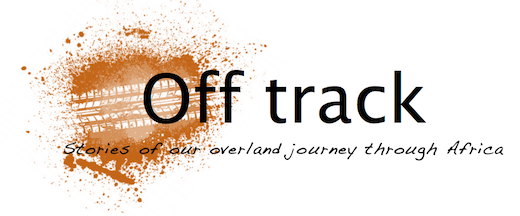

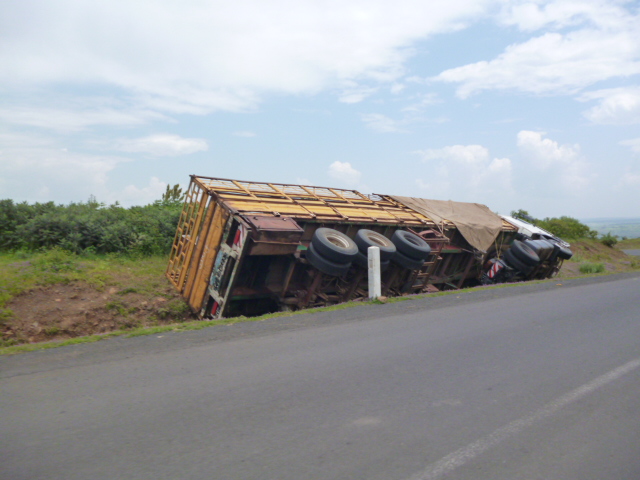

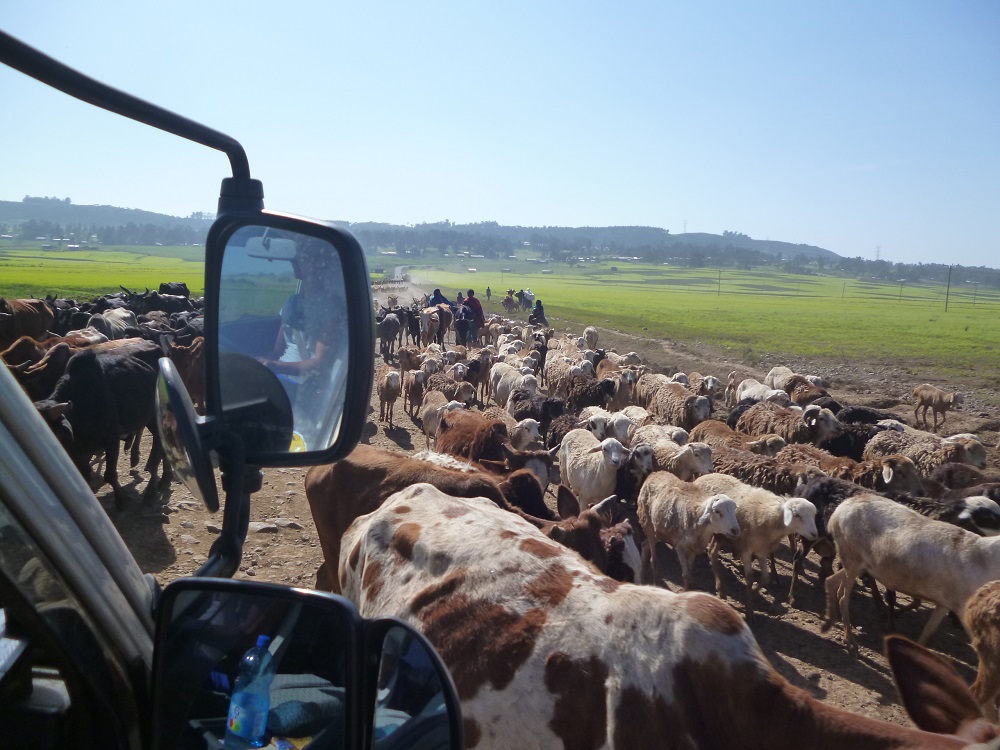
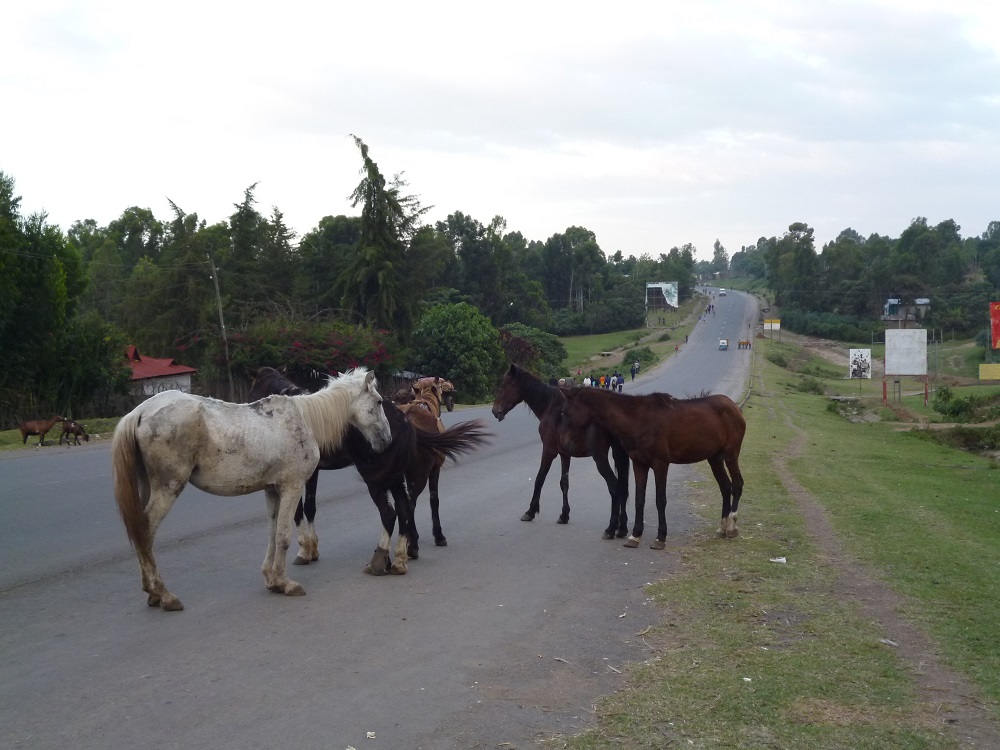
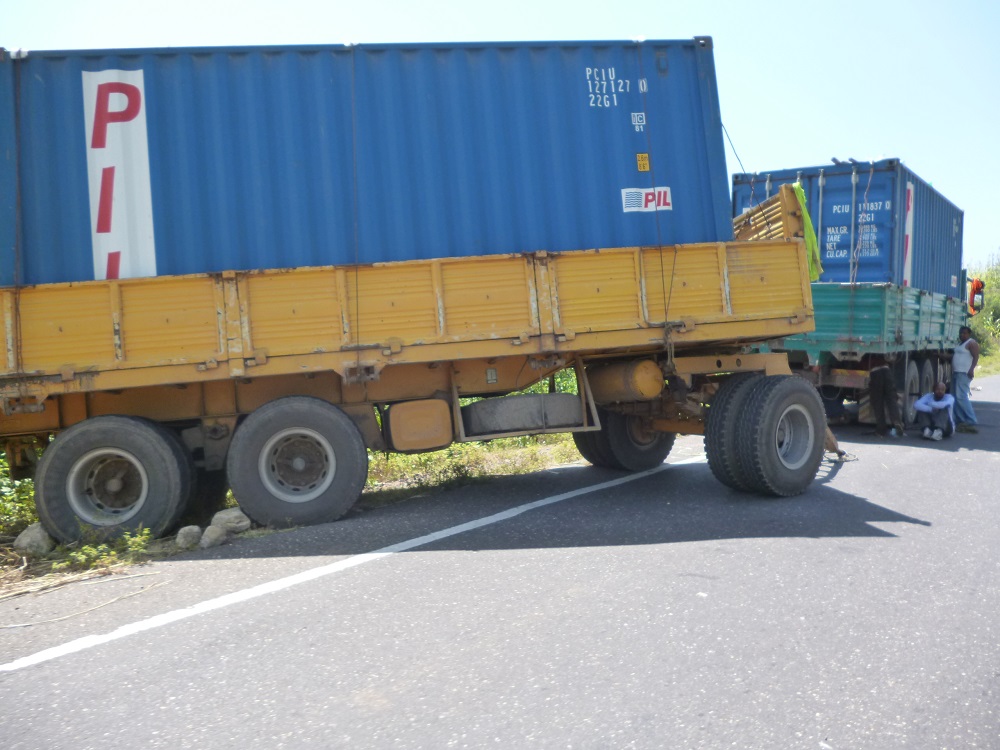
Leave a Reply